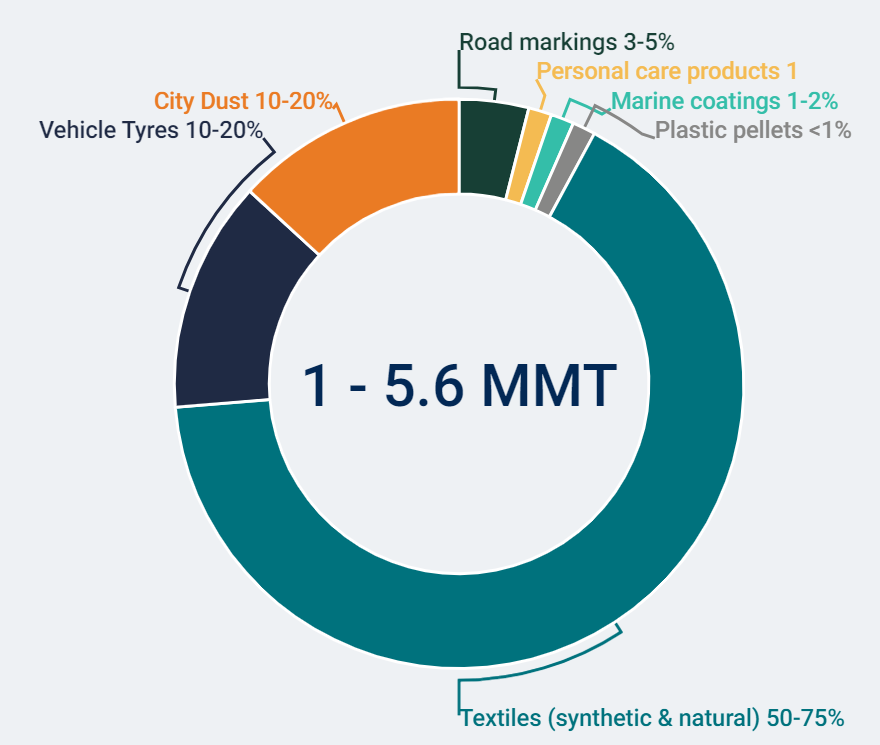Do Plastic Bottles Release Microplastics?

Microplastics, particles measuring less than 5 mm in length, have emerged as a pressing environmental concern, necessitating a detailed examination of their impact and ecological repercussions, but do microplastics in bottled water come from plastic bottles themselves?
These minute particles, originating from the fragmentation of larger plastic items and microbeads, have permeated terrestrial and aquatic ecosystems, presenting intricate challenges for environmental stability.
The pervasive nature of microplastics has led to their ubiquitous presence in oceans, rivers, lakes, soils, and even freshwater sources. Their impact on marine life is substantial, with ingestion and bioaccumulation occurring across various species. Microplastics disrupt the delicate balance in terrestrial ecosystems, influencing plant growth and soil-dwelling organisms.

Sources of microplastics and their distribution in the environment. Courtesy of First Sentier MUFG Sustainable Investment Institute .
Textiles( 50-75%)…not plastic bottles
Microfibers shed from textiles constitute the primary source of micropollution. While only synthetic microfibers are officially classified as microplastics, micro fragments from all fiber types, including natural ones like cotton and wool, contribute to pollution.
Vehicle tires (10-20%)
Vehicle tires contribute to microplastic pollution due to wear, influenced by factors such as tire composition, design, vehicle speed, and road surface texture. Tire wear generates approximately 0.5 million metric tonnes (MMT) of microplastics annually in the European Union, extrapolated to 2.5MMT globally, accounting for 4% of total tire weight on roads. The rise of electric vehicles (EVs), typically heavier than internal combustion engine counterparts, is expected to increase microplastic emissions.
City dust (10-20%)
City dust encompasses diverse microplastic sources from urban areas, including artificial turf, building paints, and industrial abrasives. Artificial turf, often used in sports, releases microplastics from polymeric infill made partly from recycled vehicle tires. Building paints, containing microspheres or microfibers, release microplastics during removal, cracking, or washing. Plastic pellets, used as abrasives in industrial processes like sandblasting, contribute to microplastic pollution during surface cleaning procedures.
Moreover, many studies reported the presence of additives in drinking water such as epoxy resins, antioxidants, lubricants, phthalates, and pigments. They might have originated from the leaching of the plastic packing for bottled water or plastic pipes in drinking water networks due to aging, UV exposure, rising temperatures, and other external forces, according to “Occurrence of Microplastics in Tap and Bottled Water: Current Knowledge”.
It’s crucial to dispel the misconception that microplastics originate from plastic bottles. While plastic bottles contribute to environmental challenges, the major culprits are diverse sources like city dust, vehicle tires, synthetic clothing, and industrial processes, not from plastic water bottles themselves.

Public image will still criticize bottles as people believe what they want to be true but plastics seen as chemical not natural and to be feared, as science cannot accept miracles which support worldview that is comforting as it deals with death and immortality.
Excellent article.
It should be easy to demonstrate how many particles in bottled water come from the bottle/bottling process. Measure the water going in and water removed from bottle after various environmental/ mechanical exposure.